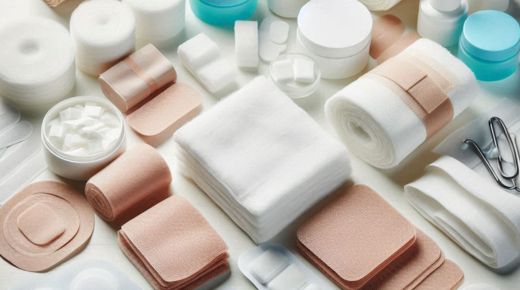
Choosing the right wound dressing is crucial for both effective healing and comfort. With a variety of options available, selecting the best wound dressing can make a significant difference in the recovery process. This article will explore the top wound dressings that promote healing while ensuring comfort, helping you make an informed decision for wound care.
The Importance of Choosing the Right Wound Dressing
Wound dressings play a vital role in protecting wounds from infection, maintaining a moist environment conducive to healing, and providing comfort to the patient. The right dressing can speed up the healing process, reduce pain, and prevent complications. It’s essential to select a dressing that suits the type of wound, its severity, and the patient’s needs.
Top Wound Dressings for Healing and Comfort1. Hydrocolloid Dressings
Hydrocolloid dressings are popular for their ability to maintain a moist environment, which is essential for wound healing. These dressings are made of a gel-forming agent that reacts with wound exudate to form a moist gel. This not only protects the wound from bacteria and debris but also promotes faster healing by keeping the wound moist.
Benefits:
- Excellent for shallow wounds like pressure ulcers and minor burns.
- Provides a cushioning effect, adding comfort.
- Promotes autolytic debridement, which helps remove dead tissue.
Comfort Factor: Hydrocolloid dressings adhere well to the skin without sticking to the wound, making dressing changes less painful and more comfortable.
2. Foam Dressings
Foam dressings are ideal for wounds with moderate to heavy exudate. They are made from a soft, absorbent material that absorbs excess fluid while keeping the wound moist. Foam dressings also provide thermal insulation, which can aid in pain relief.
Benefits:
- Suitable for pressure ulcers, surgical wounds, and draining wounds.
- Highly absorbent, reducing the need for frequent dressing changes.
- Available in various thicknesses to provide cushioning and protection.
Comfort Factor: Foam dressings are soft and comfortable against the skin, providing protection without causing irritation. Their absorbent nature helps prevent maceration of the surrounding skin, which can be a source of discomfort.
3. Alginate Dressings
Alginate dressings are derived from seaweed and are highly absorbent, making them an excellent choice for wounds with significant exudate. When alginate comes into contact with wound fluid, it forms a gel that maintains a moist environment while promoting healing.
Benefits:
- Suitable for deep wounds, pressure ulcers, and infected wounds.
- Promotes faster healing by maintaining a moist wound environment.
- Can be cut to fit the wound size and shape.
Comfort Factor: Alginate dressings conform to the wound’s shape, reducing discomfort and ensuring that the dressing stays in place. They also help minimize pain during dressing changes by not adhering to the wound bed.
4. Hydrogel Dressings
Hydrogel dressings are composed of water-based gel that helps to keep the wound moist and promotes healing. These dressings are particularly effective for dry wounds or wounds with minimal exudate.
Benefits:
- Ideal for burns, pressure ulcers, and necrotic wounds.
- Provides cooling relief, which can reduce pain and discomfort.
- Promotes autolytic debridement by rehydrating dead tissue.
Comfort Factor: Hydrogel dressings offer soothing relief to painful wounds, especially burns. Their cooling effect can significantly reduce pain and inflammation, making them a comfortable option for patients.
5. Transparent Film Dressings
Transparent film dressings are thin, clear dressings that provide a protective barrier against bacteria while allowing oxygen and moisture vapor to pass through. These dressings are commonly used for superficial wounds and as a secondary dressing over more absorbent dressings.
Benefits:
- Suitable for minor cuts, abrasions, and IV sites.
- Allows monitoring of the wound without removing the dressing.
- Waterproof, making them ideal for wounds in areas prone to moisture exposure.
Comfort Factor: Transparent film dressings adhere to the skin but not to the wound bed, making them comfortable and easy to remove. Their flexibility allows for comfortable movement, even when applied to joints or other mobile areas.
Selecting the right wound dressing is crucial for promoting healing and ensuring comfort. Hydrocolloid, foam, alginate, hydrogel, and transparent film dressings each offer unique benefits that cater to different wound types and patient needs. By understanding the specific advantages of each dressing, you can choose the most appropriate option for your wound care requirements, ensuring a quicker and more comfortable recovery process. Always consult with a healthcare professional to determine the best dressing for your specific wound type and condition. Take care of your elderly relatives and search for adult diapers if they are needed.



